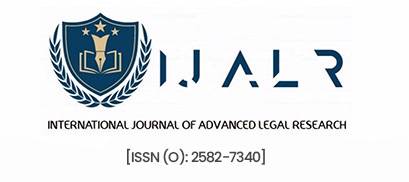INTRODUCTION
“Knowledge, innovations, and practices that are indigenous to a people group are collectively referred to as Traditional Knowledge.”
In many cases, Traditional Knowledge is passed down verbally from one generation to the next. This information is typically derived from the accumulation of experience over the course of several centuries and is customised to the local culture and environment. Stories, songs, folklore, proverbs, cultural values, beliefs, rituals, and other forms of expression can all be ways in which it might be expressed. It is typically owned jointly. In addition to this, it is the origin of the traditional usage and management of lands, territories, and resources, as well as the indigenous farming practices that are kind to the earth and do not deplete the resources. Oral traditions are followed by indigenous peoples. These traditions include cultural expressions such as dances, paintings, carvings, and other artistic forms that have been practiced and passed down through the generations.
Traditional Knowledge is of utmost significance, particularly in regions that are home to a diverse array of species, such as India. Due to the fact that indigenous people have been responsible for the preservation and protection of a significant portion of the world’s biodiversity, the preservation of Traditional Knowledge is absolutely necessary for the preservation and sustainable development of the environment.
Knowledge that has been passed down through generations is essential to the identities, cultural heritage, and livelihoods of indigenous peoples. The transmission of Traditional Knowledge from one generation to the next is essential for the preservation and promotion of the cultures and identities of indigenous peoples, as well as for the maintenance of livelihoods, the resilience to natural and man-made disasters, and the maintenance of economic development that is culturally appropriate.[1] The comprehensive approach to life that indigenous peoples take is brought to light by Traditional Knowledge, which is an essential component of the cultural and biological variety that exists across the globe.
For centuries, indigenous peoples have been subjected to continued colonialism, racism, exploitation, and dispossession, all of which have contributed to the formation of structural inequalities, as well as societal exclusion and vulnerability[2]. Additionally, these processes have resulted in the undervaluing and undermining of Traditional Knowledge. Indigenous languages, which contain a vast amount of Traditional Knowledge pertaining to conservation and ecological systems, as well as providing opportunities for the preservation of biodiversity and the maintenance of cultural diversity, are also in danger of having their existence threatened.
An increasing number of people are beginning to recognise the significance of traditional wisdom. Knowledge that has been passed down through generations is not only valuable to those who rely on it in their day-to-day lives, but also to modern companies and agricultural practices. Indigenous peoples have a deep grasp of their ecosystems, which they have developed over the course of thousands of years, and their everyday lives and practices provide the foundation for their Traditional Knowledge on the conservation of land and species, as well as the management and revitalisation of biological resources with regard to conservation. It has the potential to play a significant role in sustainable development and in tackling the most serious global concerns, including as climate change, land management, and land conservation, as well as in strengthening scientific, technological, and medical research, as proven in the pharmaceutical industry, among other areas. Furthermore, Traditional Knowledge has the potential to provide viable pathways for achieving food security not only for indigenous peoples but also for people living in other parts of the world. There are a number of indigenous land and environmental management methods that have been demonstrated to improve and promote biodiversity at the local level, as well as to assist in the maintenance of healthy ecosystems. There is a substantial way to retain and preserve indigenous cultures and identities, reduce the rates of illiteracy and school dropouts, improve learning, protect the environment, and promote wellness through the use of educational techniques that combine indigenous Traditional Knowledge and languages.
The right of indigenous peoples to promote, protect, and safeguard their Traditional Knowledge is incorporated in a number of international legal and policy instruments. This is done in recognition of the significance of Traditional Knowledge. According to Article 31 of the United Nations Declaration of the Rights of Indigenous Peoples (UNDRIP)[3], the safeguarding of indigenous peoples’ rights to their Traditional Knowledge is a particularly important aspect. Additionally, the Convention on Biological Diversity (CBD) acknowledges the intimate relationships that indigenous peoples and local communities have to biological resources, as well as the contributions that Traditional Knowledge can make to the Convention and to the preservation of biological variety (Article 8(j))[4]. Therefore, in order to achieve this goal, the CBD has established a working group that will address the implementation and safeguarding of Traditional Knowledge. The United Nations Declaration describes the significance that Traditional Knowledge plays in ensuring the rights of indigenous peoples. Other UN bodies also have related policies and programs that acknowledge the function that Traditional Knowledge plays in this regard.
According to WTO, “Traditional Knowledge encompasses the knowledge, expertise, skills, and practices that are cultivated, preserved, and transmitted between generations within a society, frequently constituting an integral aspect of its cultural or spiritual identity”[5].
[1] “Backgrounder – Traditional Knowledge”
<https://social.desa.un.org/sites/default/files/migrated/19/2019/04/Traditional-Knowledge-backgrounder-FINAL.pdf>
[2] “Issues Relating to Traditional Knowledge Systems and Intellectual Property Rights (IPRs)” <https://www.fao.org/4/XII/0911-A3.htm>
[3]United Nations Declaration of the Rights of Indigenous Peoples (UNDRIP), Article 31.
[4]Convention on Biological Diversity (CBD), Article 8(j)
[5] “Traditional Knowledge” (Traditional-knowledge) <https://www.wipo.int/en/web/traditional-knowledge/tk/index>

